- Step 1: Setup the Camera – Find the Camera’s IP Address Please refer to the manufacturer’s manual for more detailed information.
- Step 2: Configure the Camera Using the Web-based Configuration Tool Open a web browser and access the Camera’s configuration page at: http://192.168.1.157/ .
- Step 3: Set the Image Resolution Using the camera’s web-based configuration tool, click “Video”, it will allow you to select an image resolution. (See the screenshot above). Please make sure it matches your CameraFTP subscription.
- Step 4: Wireless Setup Click on “Wireless Setup”, and then click on “Site Survey”. You will find a list of Wireless Networks. Select your wireless router’s SSID in the list and enter the correct authentication credentials. Your camera will be connected to your wireless network.
- Step 5: Setup CameraFTP Service If you don’t have an account on CameraFTP.com, please visit www.cameraftp.com and sign up a free trial account. CameraFTP.com offers 2-day free trial. After 2 days, you need to order our paid subscription to continue using the service.
Turn on the camera; connect the camera with a network router using an Ethernet cable.
From a PC in the same network, insert the camera’s software CD and install the setup wizard. After it is installed, run the Setup Wizard. You will see the screen like below:
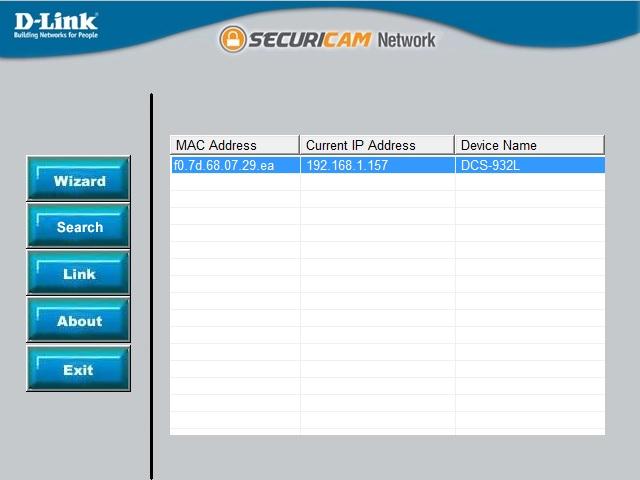 Click on “Search” to find the D-link camera in the same network.
Click on “Search” to find the D-link camera in the same network.(Please replace the IP address with the real IP address found using the SwannEye Search Tool), log on the configuration tool. According to the manual, the default username is admin and the password is blank (empty).
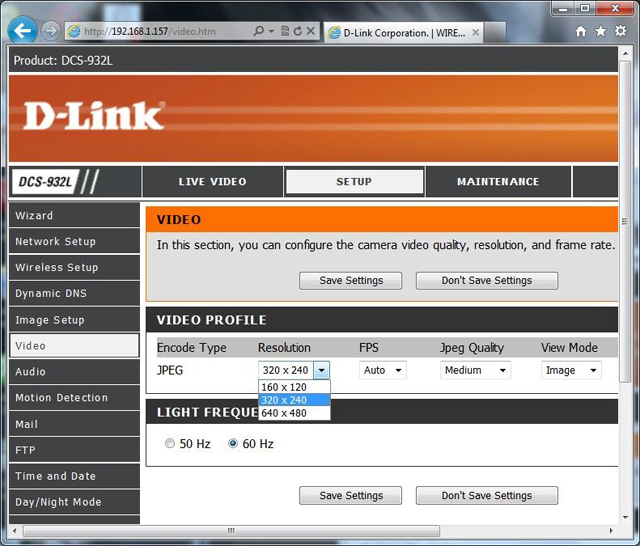
For most home users or casual users, 320x240 is ok.
For better image quality, you can choose 640x480. Please note this will increase the bandwidth and storage usage by about 4 times. The CameraFTP subscription cost is also significantly higher.
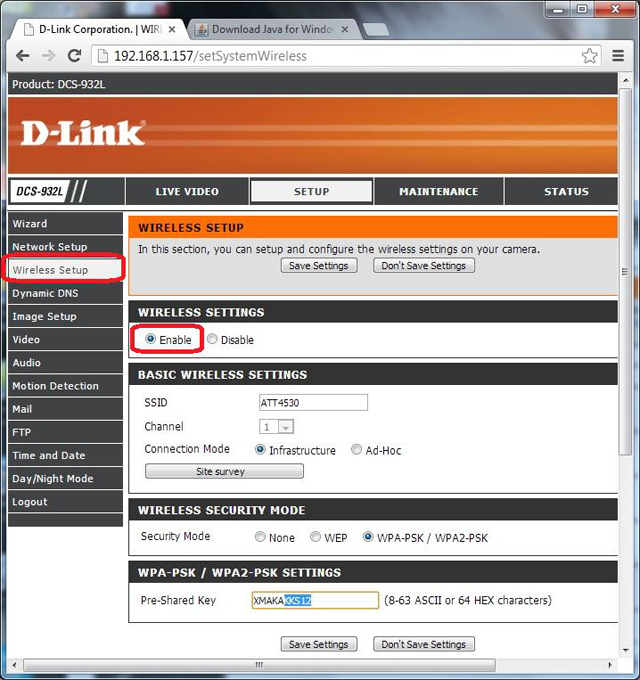
Assuming you have an account on CameraFTP.com, then click on the “FTP” tab on the left-hand side. You will see the screen below.
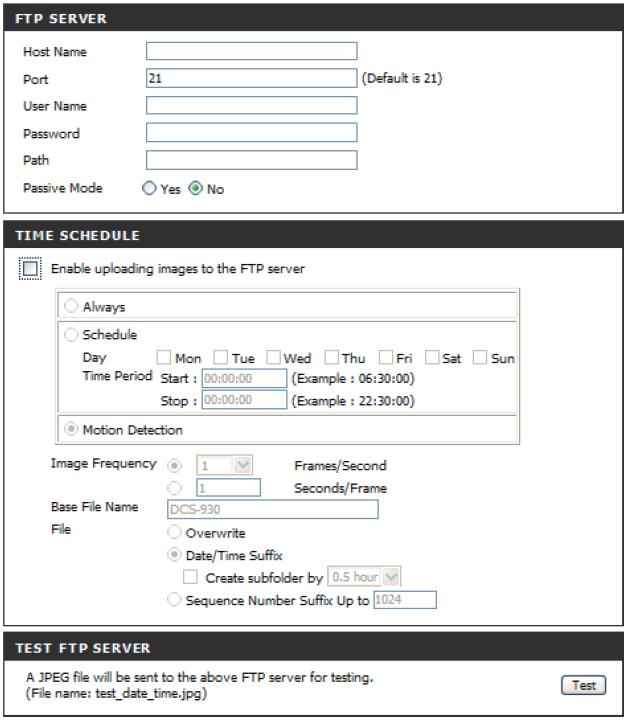 Check the checkbox “Enable uploading images to the FTP server”. “Motion Detection” is recommended.
Check the checkbox “Enable uploading images to the FTP server”. “Motion Detection” is recommended.If you select “Always”, then please select an upload interval that matches your CameraFTP subscription. For example, if your subscription allows a max upload frequency of 1 image / 2 seconds, then select the “Image Frequency” to 2 Seconds/Frame. Entering an incorrect number may get your account blocked.
If you enable Motion Detection, this model camera does not allow you to select “Image Frequency”. In this case, the D-link camera will automatically upload at about 2-3 images/sec. When you order a subscription on CameraFTP.com, you can select an upload frequency of 1 image/sec or 2 images/sec.
Please enter the following information:
FTP service : ftp.cameraftp.com
FTP port : 21
FTP User and Password : the same as your cameraftp.com username and password.
FTP Upload Folder : /YourCameraName
Your Camera Name is created on www.CameraFTP.com website when you add a new camera. (See the screenshot below)
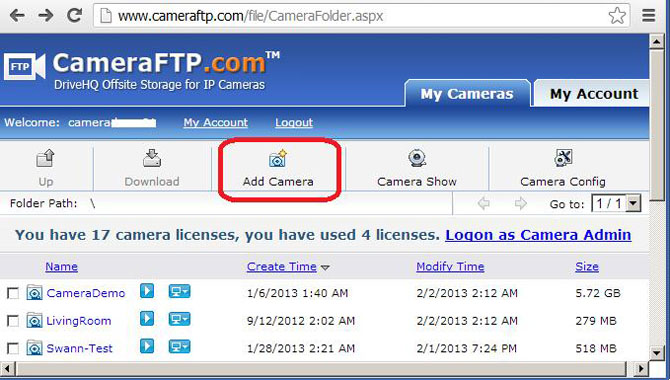
Passive Mode: Yes. (Note Active FTP is often blocked by routers. Please use Passive Mode, or PASV)
Click on the” Test” button to test your FTP setup.If it is successful, congratulations, you are done! If not, you can click on the Status tab to find more detailed error information.
About Motion Detection :
- If you check the radio button “Always”, then the camera will keep uploading images to CameraFTP site. It will use more storage space and bandwidth. It may also slow down your Internet connection.
- If you check the radio button of “Motion Detection” (It is recommended), then images will be uploaded only if the camera detects some motion activities (events). It reduces the bandwidth usage so that the camera will be less likely to slow down your network. It is the recommended setting.
- D-link camera does not allow customizing the upload frequency when motion detection is enabled. You can order a subscription of 1 image/sec in this case.
You can then remove the Ethernet cable. If you need to make changes, you can run the “IP Camera Tool” again to find the camera’s IP address (as it may change), and then access the camera’s configuration page.
No comments:
Post a Comment